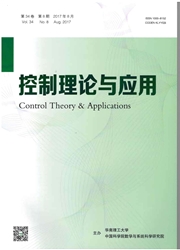

 中文摘要:
中文摘要:
快速刀具伺服系统(fast tool servo,FTS)是实现非圆截面和非轴对称表面零件加工的关键部件.加工过程中,FTS应克服时变切削力负载和自身参数的非线性,驱动刀具完成高频高精度跟踪运动.为了解决FTS的快速精密跟踪控制问题,根据刀具运动参考轨迹已知的特点,应用自抗扰控制原理和前馈控制策略,针对基于剪应力和正应力电磁驱动的两种直线执行机构,分别设计了采用线性和非线性扩张状态观测器的自抗扰控制器,并利用传递函数和描述函数方法,分析了线性控制器的跟踪精度和动态刚度特性,探讨了非线性控制系统的极限环问题.两种基于自抗扰控制的快速刀具伺服系统已应用于发动机椭圆截面活塞的精密车削和二维正弦微结构表面的超精密车削,满足了加工需求.研究与应用结果表明:自抗扰控制思想独特、算法易于工程实现,具有很好的工程应用价值.
 英文摘要:
英文摘要:
Fast tool servos play crucial roles in machining workpieces with noncircular cross sections or non-rotationally symmetric surfaces,by actuating the cutting tool to complete desired tracking motions with high accuracy and at high speed,in the presence of time-varying cutting force disturbance and nonlinear plant parameters.To this end,two active disturbance rejection solutions are developed to control the shear stress and normal stress electromagnetically driven linear actuators.Given the reference trajectories of the cutting tool,the feed-forward strategy is combined the active disturbance rejection design with the linear and nonlinear extended state observers.The tracking accuracy and dynamic stiffness are analyzed using classic frequency response method for the linear controller; and the existence of limit cycles associated with the nonlinear controller is investigated using the describing function method.The proposed control strategies for the fast tool servos have found successful applications in precision machining an engine piston with elliptical cross sections and ultra-precision machining two dimensional micro-structured surfaces.The results show that both the novel concept and the easy-to-use algorithms make the active disturbance rejection control a tool of choice with a promising future in this industry.
 同期刊论文项目
同期刊论文项目
 同项目期刊论文
同项目期刊论文
 期刊信息
期刊信息
